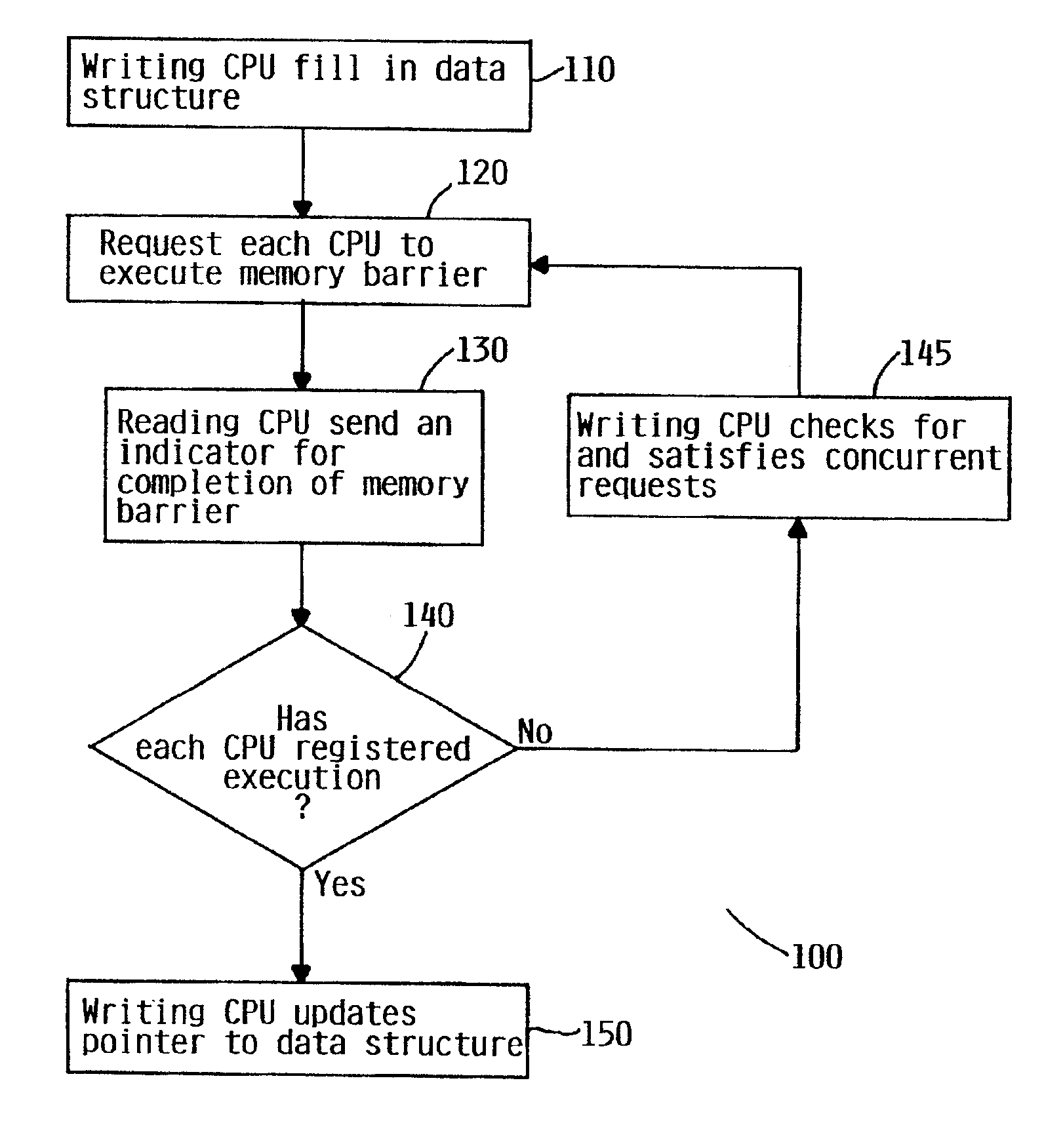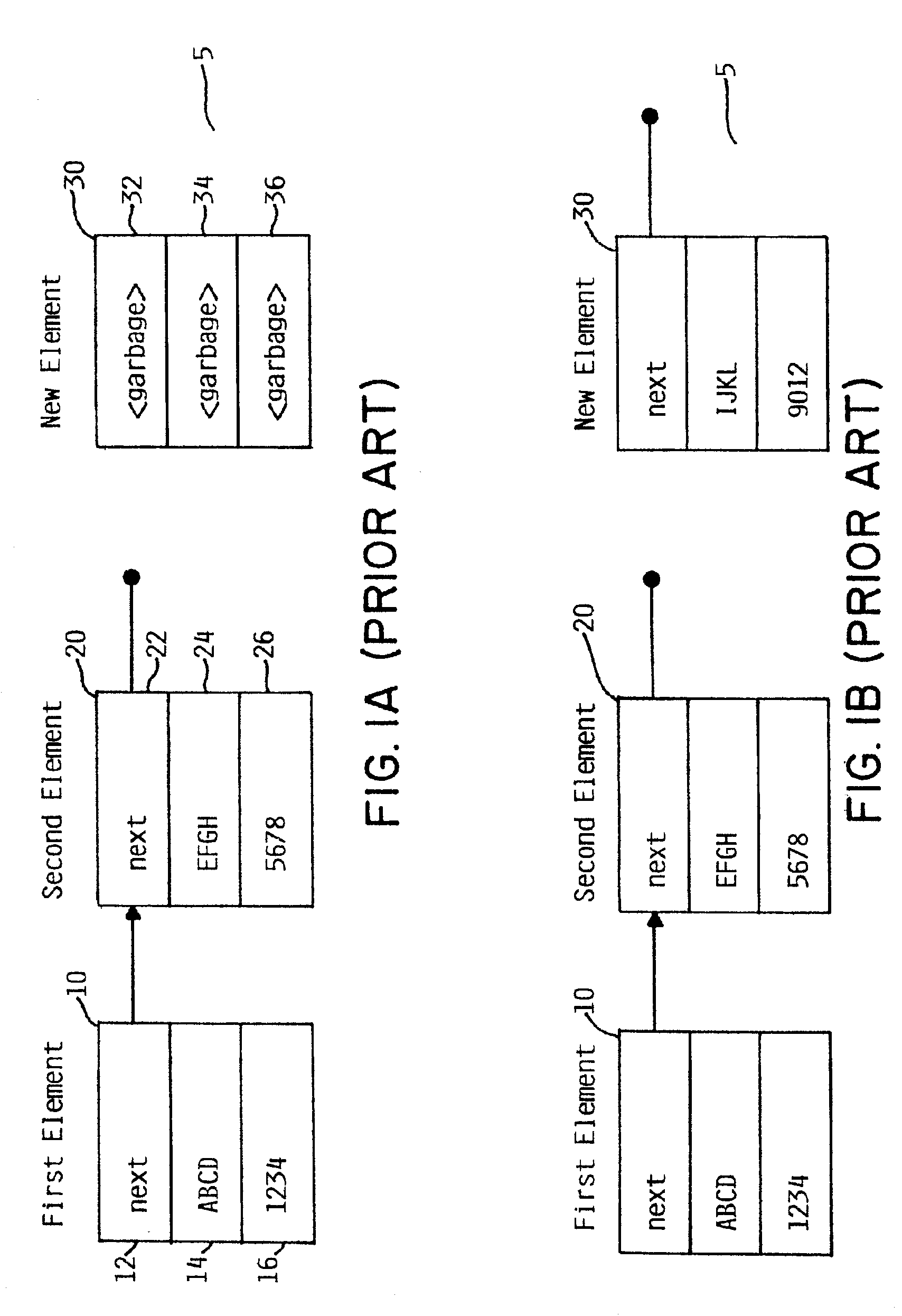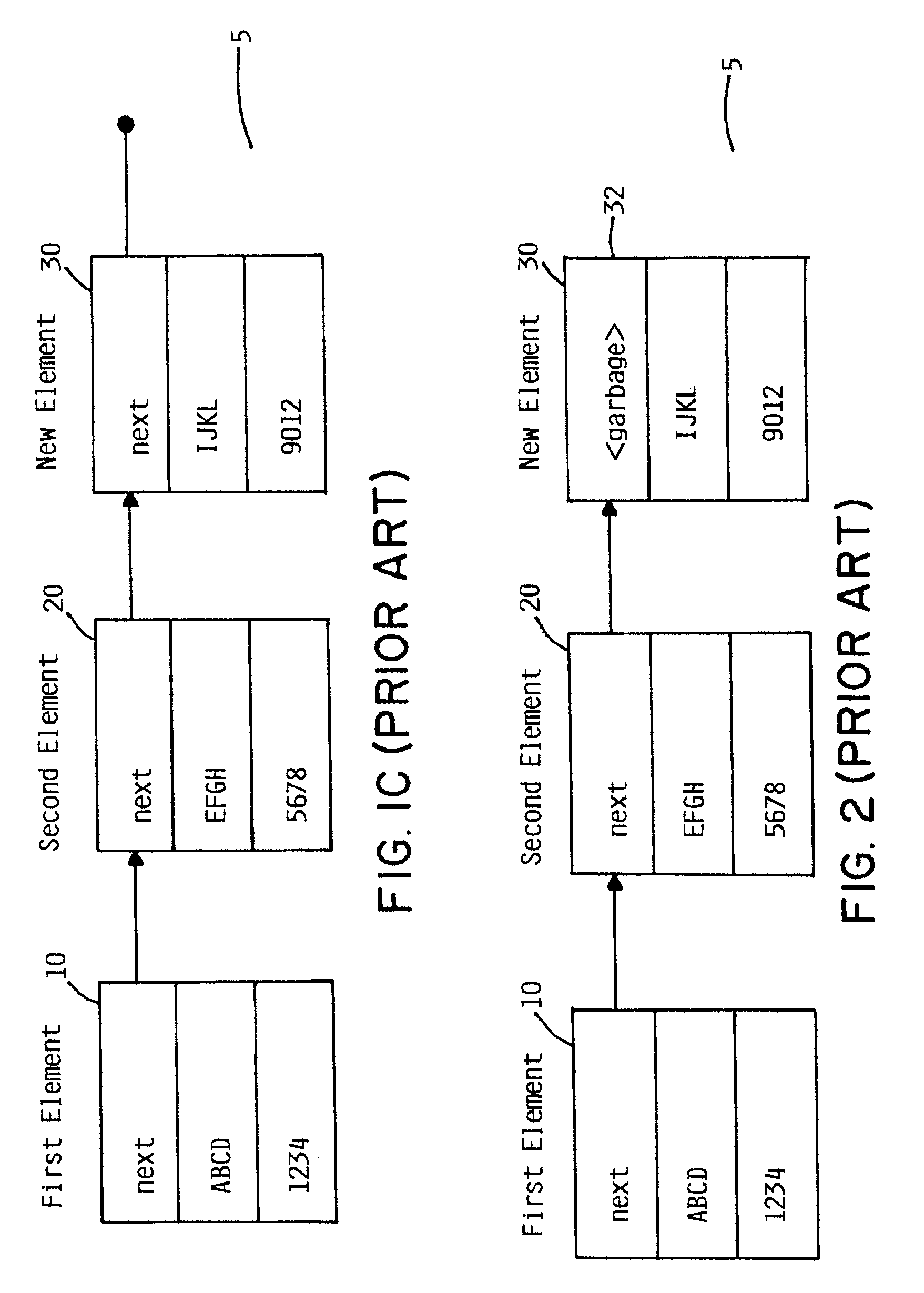Software implementation of synchronous memory barriers
a technology of synchronous memory and software, applied in the direction of program synchronisation, multi-programming arrangements, instruments, etc., can solve the problems of time and therefore has a greater overhead, the hardware cannot implicitly differentiate the priority between reading and writing operations, and the garbage value seen
- Summary
- Abstract
- Description
- Claims
- Application Information
AI Technical Summary
Benefits of technology
Problems solved by technology
Method used
Image
Examples
first embodiment
[0034]There are two components for avoiding deadlocks, registering completion of execution of memory barrier instructions, and satisfying concurrent memory barrier requests. A first embodiment for avoiding a deadlock scenario is to provide an array for each CPU to register memory barrier execution requests. The array provides for one entry per CPU. A CPU requesting a lock to write to the data structure must scan the array to guarantee that all CPUs have executed a memory barrier to flush out any invalidates prior to updating the pointer. In a preferred embodiment, each entry in the array is a bitmask, with one bit per CPU. The CPU requesting the lock to update the pointer sends an interrupt to all CPUs to force a memory barrier execution. Each CPU uses an atomic operation to subtract its bits from each CPUs bitmask from the array, and the requesting CPU must scan the array until each of the values in the array is zero. During this time, the writing CPU checks for and satisfies concu...
second embodiment
[0062]A second embodiment for avoiding a deadlock scenario is to use a generation-based bitmask. Each memory-barrier execution request is assigned a generation number. Requests that are initiated while a previous request is being serviced is assigned the same generation number as the previous request. Once a generation number is serviced, a request is complete. Deadlock is avoided by having all waiting CPUs repeatedly execute memory-barrier instructions and registering completion of the memory-barrier instruction with the bitmask.
[0063]Pseudocode for a CPU responding to an interrupt requesting a memory-barrier execution implementing the generation based bitmask is as follows:[0064]1. Suppress interrupts.[0065]2. If our bit in “need_mb” (bitmask) is not set, restore interrupts and return.[0066]3. Acquire “need_mb_lock”.[0067]4. Execute a memory-barrier instruction[0068]5. Clear out bit in “need_mb”. If ours is the last bit set, do the following:[0069]a) Increment the “current generat...
PUM
 Login to View More
Login to View More Abstract
Description
Claims
Application Information
 Login to View More
Login to View More - R&D
- Intellectual Property
- Life Sciences
- Materials
- Tech Scout
- Unparalleled Data Quality
- Higher Quality Content
- 60% Fewer Hallucinations
Browse by: Latest US Patents, China's latest patents, Technical Efficacy Thesaurus, Application Domain, Technology Topic, Popular Technical Reports.
© 2025 PatSnap. All rights reserved.Legal|Privacy policy|Modern Slavery Act Transparency Statement|Sitemap|About US| Contact US: help@patsnap.com



